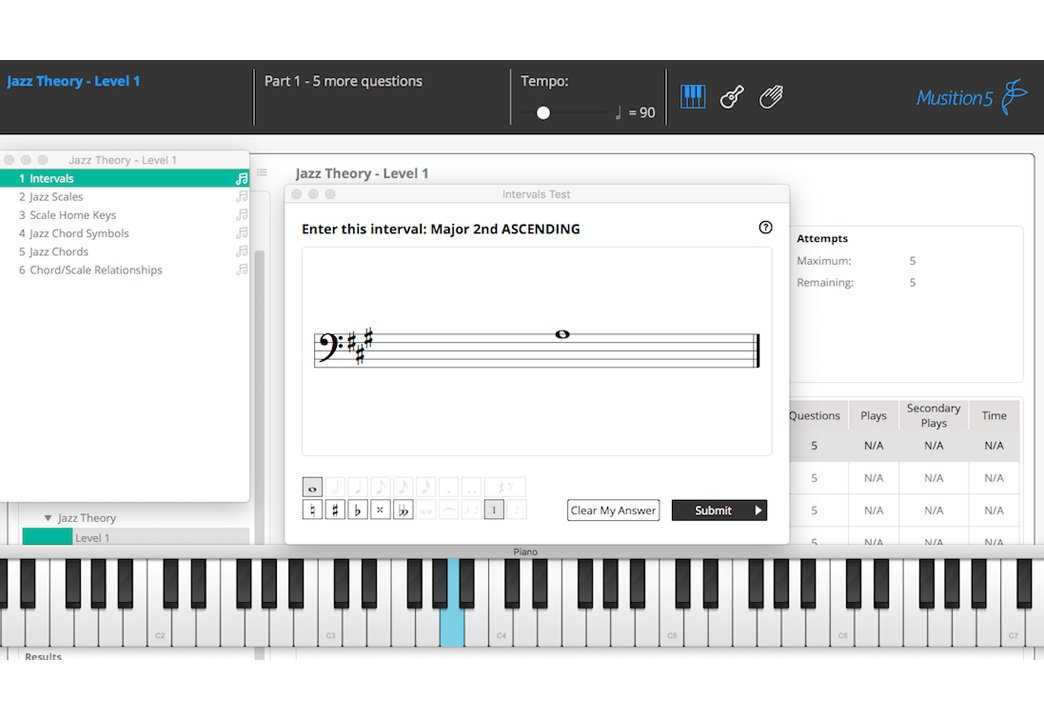The SAMR Model & Music Technology
The SAMR Model (Substitution, Augmentation, Modification, Redefinition) provides a helpful framework for how technology can support learning activities. Created by Dr. Ruben Puentedura, this model establishes a continuum from Substitution (where technology replaces technology in traditional instruction without substantive improvement), to Augmentation (where technology improves traditional instruction), to Modification (where technology allows for significant task redesign), to Redefinition (where technology allows learning tasks that were not possible before). The model addresses the range of ways that music technology functions both serve and support traditional music instruction as well as create entirely new possibilities for music instruction, often with some overlap.
The SAMR model can easily be applied to both hardware and software products in music education. In terms of hardware, a synthesizer could be seen as a Substitution or a Redefinition (a synthesizer can be programmed to recreate the sound of a violin - a Substitution - or it can be programmed to create a sound that is not possible using traditional musical instruments - a Redefinition). Other hardware examples include an electric piano or guitar (Substitution), an amplifier (Augmentation), adaptive musical instruments like the Soundbeam or Skoog (Modification), or innovative new interfaces such as the Novation Launchpad (Redefinition).
Software can also be categorized using the SAMR model. Music theory software titles, such as Auralia, Musition, and websites such as MusicTheory.net, can be seen as Substitutions as the content and assessments can easily be done using pencil and paper. The fact that the software allows for drill and practice activities like note naming, melodic dictation, and ear training is certainly more convenient, but not necessarily “new”. Notation software titles, such as Flat, Noteflight, Finale or Sibelius, could be seen as an Augmentation as it can improve the process of creating and editing sheet music. Music production or sequencing software titles (often referred to as DAWs), such as GarageBand, Soundtrap, and Logic - which allow the user to record, create, and edit music using only a laptop or mobile device - might be seen as a Modification as it is clearly a redesign of the way musicians create music in the digital world. Innovative software titles for music composition that do not use the traditional methods of notation or sequencing, such as O-Generator, Hyperscore, and Ableton Live, could be seen as Redefinitions, as the software designers created non-traditional ways of capturing musical ideas.
When you apply the SAMR Model to teaching with both hardware and software tools in music education, it’s not only how these tools are categorized - it’s how we use them to teach. I am a firm advocate of using technology only when it enhances teaching and learning. There are some aspects of music education where leaving the technology unplugged is a good thing. There are also aspects of music education that are difficult to teach without it. Here are three examples of music teaching situations applied to the SAMR model:
Large scale assessment of performance ensemble students - there are a few performance assessment products on the market. As I helped to design PracticeFirst, I think it’s the best one out there. PracticeFirst is a Redefinition of assessment. Here’s why: the PracticeFirst feedback display shows students their pitch and rhythmic accuracy - including the length of each rhythmic value (others don’t provide that) and their intonation. This graphic display of their musical performance is a redefinition. Even the most skilled music educator in the world couldn’t provide instant visual feedback to each student in their ensemble, let alone hundreds at a time. That’s not to say that technology is better at assessing - not at all. It’s just that the use of the technology redefines the task.
Drill & Practice - the easiest example of a Substitution as well as Augmentation is the idea of having students practice certain skills - like music theory - over and over until those skills become second nature. Take note naming or interval recognition. Software like Auralia and Musition are perfect for substituting paper and pencil tests for self-grading quizzes that contain audio and visual cues. Augmentation comes into play when you consider features such as YouTube integration - allowing students to see and hear musical concepts in music that they know and listen to.
Composition - the clearest examples of the SAMR Model is when technology is applied to teaching students how to compose. Imagine if there was no technology available in the classroom. How would you teach your students to compose? It’s certainly possible, but teaching 32 students simultaneously how to compose a melody, harmony, beats, etc. is a BIG challenge. It requires students to have musical notation skills - both reading and writing - and lacks the instant feedback for students to hear what they are composing as they go. Products like Soundtrap and Soundation redefine the activity altogether. Being able to select from audio clips, record audio, import audio, add digital signal processing, edit audio, and export the finished product for consumption on a variety of platforms simply isn’t possible without technology. Sure - composers did incredible things before the advent of technology, but with technology the act of composing is now accessible to EVERY student - not just a small population.
In closing, it is important to note that every software title has the ability to touch on all aspects of the SAMR model. It’s not only the features that open up these possibilities - but how they are used. I urge all music teachers to consider the SAMR Model when they use technology with their students - be it hardware or software. In a similar way to Bloom’s Taxonomy - we are always aiming for Creating (formerly known as Synthesis) - allowing students to apply their learning to create something new. While it is 100% fine to have technology substitute traditional methods of instruction and assessment, it’s a more meaningful use of technology to strive for redefining what and how we teach our students.




